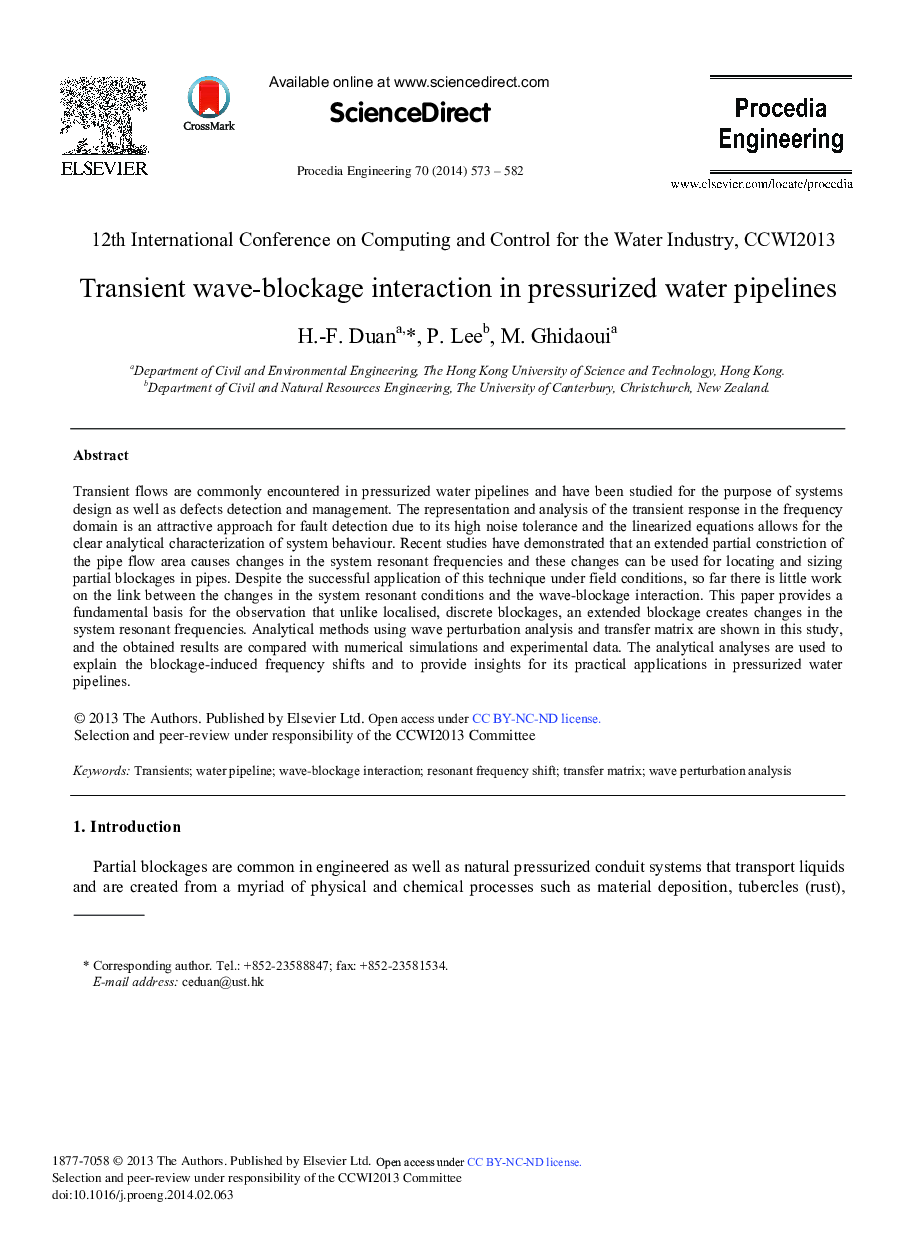| Article ID | Journal | Published Year | Pages | File Type |
|---|---|---|---|---|
| 858385 | Procedia Engineering | 2014 | 10 Pages |
Transient flows are commonly encountered in pressurized water pipelines and have been studied for the purpose of systems design as well as defects detection and management. The representation and analysis of the transient response in the frequency domain is an attractive approach for fault detection due to its high noise tolerance and the linearized equations allows for the clear analytical characterization of system behaviour. Recent studies have demonstrated that an extended partial constriction of the pipe flow area causes changes in the system resonant frequencies and these changes can be used for locating and sizing partial blockages in pipes. Despite the successful application of this technique under field conditions, so far there is little work on the link between the changes in the system resonant conditions and the wave-blockage interaction. This paper provides a fundamental basis for the observation that unlike localised, discrete blockages, an extended blockage creates changes in the system resonant frequencies. Analytical methods using wave perturbation analysis and transfer matrix are shown in this study, and the obtained results are compared with numerical simulations and experimental data. The analytical analyses are used to explain the blockage-induced frequency shifts and to provide insights for its practical applications in pressurized water pipelines.
